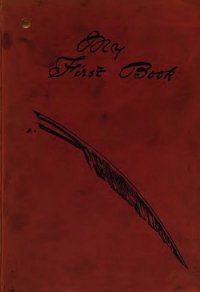Operation Nemesis: The Assassination Plot that Avenged the Armenian Genocide - Bogosian Eric (мир книг .txt) 📗
According to church history, as a result of his evil deeds, God struck Trdat with a sickness that left him crawling around on all fours, on the brink of madness. In some stories the king lost his mind; in others God literally turned Trdat into a wild boar. Willing to try anything to cure her brother, Trdat’s Christian sister, Khosrovidukht, proposed freeing the Christian monk Gregory, who at this point had been imprisoned for over a decade. Gregory was dragged out of his filthy dungeon, cleaned up, and brought before Trdat. Gregory, full of Christian forgiveness, blessed Trdat, and the old king snapped back to perfect health. Overcome with joy, Trdat immediately declared Armenia a Christian nation and invited Gregory to be the first head of this new state church. Saint Gregory “the Illuminator” would assume the role of chief bishop4 and leader of the new Armenian Christian faith. Trdat and Gregory demanded compliance with the new way of doing things; any resistance was met with violence. Throughout the kingdom, heathen sanctuaries and temples were leveled. (The only surviving pagan temple in Armenia is in Garni, a popular tourist spot.) Hundreds of churches and monasteries were established, and hundreds of priests and bishops were ordained.
While converting members of the existing priestly class to Christianity, Gregory negotiated terms in order to secure the allegiance of the formerly pagan priests. For example, Armenian priests are allowed to marry and the pagan ritual of animal sacrifice was also preserved, since this sacrament provided an important part of a priest’s income. After the animals were dispatched, the pagan (and, later, Christian) priest would take a commission, bringing a chunk of the slaughtered animal home to his own family. In the early church writings, Gregory laid down the law to his priests: “Your portions of the offerings shall be the hide and right-hand parts of the spine, the limb and fat, and the tail and heart and lobe of the lungs, and the tripe with the lard; of the ribs and shank-bones a part, the tongue and the right ear, and the right eye and all the secret parts.”5 This ritual has survived to the present as the madagh. Anyone who has attended an Armenian funeral has partaken of this animal sacrifice in the form of a small sliver of cooked lamb on bread. In Armenia today, ritual slaughter of sheep is still common. Madagh has also become part of the annual ceremony memorializing the genocide on April 24.
While meditating in Trdat’s capital city of Vagharshapat, Gregory had a vision of Jesus descending to earth and striking the ground with a hammer. In his vision, a great Christian church topped with a massive cross rose from that spot. Following what he understood to be a divine commandment, Gregory built a church, renaming the city Etchmiadzin (translated as “the place of the descent of the only begotten”). This complex of holy shrines and churches still stands, some seventeen hundred years later.
Around the same time that the Armenian Church was founded, circa AD 300, long before the Muslim Arabs, Turks, or Mongols invaded, the anti-Christian Diocletian stepped down, and Emperor Constantine took over the Eastern Roman Empire. Constantine’s mother, Helena, had been a practicing Christian, encouraging his more tolerant attitude toward the new religion. In 313 he issued an edict “tolerating” the fledgling faith throughout the Roman Empire. Constantine also moved the center of the Eastern Roman Empire to the city of Byzantion and renamed it after himself. Thus Constantinopolis, or Constantinople, would carry Constantine’s name until 1923, when Ataturk officially renamed the great city Istanbul.
There are at least three reasons why Constantinople grew to be the capital of an empire. First of all, it straddles the Bosphorus, the major strait connecting the Black Sea to the Mediterranean. It is the gatekeeper to all of Russia’s warm-water ports as well as the Crimea. For this reason it has always been a key chokepoint for Russian trade. (At the onset of World War I, half of Russia’s world trade moved via the Bosphorus.)6 Second, this place where two seas join culminates in one of the world’s greatest harbors. In places it is a hundred feet deep and is protected from weather by the vast, calm Sea of Marmara, lying just to the south. Farther south are the headlands of the Dardanelles, and beyond them the eastern Aegean littoral, an awesome collection of islands and inlets. “Not only did the site control trade between the Black and Mediterranean Seas, and between Asia Minor and the Balkans, but it also could potentially rely upon a vast and sea borne provisioning zone stretching from the Crimean peninsula to Egypt and beyond.”7
Third, this magnificent harbor is naturally defensible thanks to the imposing rocky heights projecting over it. This massif was, until the time of aircraft, almost impregnable. Constantinople/Istanbul is perched atop seven hills of stone, ringed by walls and fortifications built by the Romans and the Byzantines and, later, the sultans. Any approaching warships must either pass the Dardanelles or come down the Bosphorus. Gallipoli peninsula, where tens of thousands of soldiers died during World War I, is the landmass flanking the Dardanelles straits.
In its early years, Armenians made up a significant segment of the burgeoning Christian society. But Armenian churches celebrated the liturgy in Greek or Syriac, not Armenian. The priesthood and various educational institutions widely used Greek and Syrian. A century after the Armenian Church was established, the Armenian king Vramshapouh and his reigning Catholicos, Sahak Partev, concluded that an Armenian alphabet was crucial to strengthening the national Christian Armenian identity.
The task of creating a new alphabet was assigned to a scholar-monk named Mesrob Mashtots, who invented the Armenian alphabet of thirty-six letters (two more were added later) in 405. After naming the characters and ordering them, Mesrob had the renowned calligrapher Rufinus add artistic refinements. The first sentence written down in Armenian by Mesrob is said to have been the opening line of Solomon’s Book of Proverbs: “For learning about wisdom and instruction, for understanding words of insight.” In 430 the Bible was translated into the Armenian language from copies imported from Constantinople and Edessa. Previously the Bible was available only in the Syriac, Latin, Coptic, and Abyssinian languages. The introduction of a written language unique to the Armenians triggered a cultural renaissance. More than that, it unified a people and permanently forged a bond between literacy and religion that has survived to this day.
In 451, a century and a half after the Armenians embraced Christianity, their faith was tested. During this era the Byzantines (who were the heirs to the Eastern Roman Empire) began to lose their grip on the farthest reaches of their empire and the Persians became the dominant power in the region. The Persians practiced Zoroastrianism, a religion and philosophy based on the teachings of the prophet Zoroaster (Zarathustra), and they were not pleased that the Armenians followed another faith. These religious differences resulted in a number of insurrections by the Armenians against the Persians.
On May 26, 451, a major battle took place on the Avarayr Plain in Vaspurakan. Thousands of Armenians fought the vastly superior Sassanid Persian troops. Though most of the Armenian princes, including their leader, Vartan Mamigonian, fell in battle, the encounter had enduring value. The Armenians lost the battle but won the war, so to speak, because after the “Battle of Vartanantz,” the Persians, finding the Armenians too difficult to control, left them alone to practice their faith as they wished. Saint Vartan is revered to this day by Armenians all over the world.8




